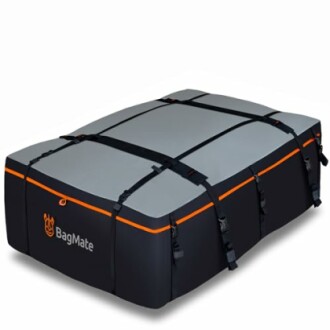
The Pros and Cons of Using a Heavy-Duty Roof Bag
Key Takeaways
- Heavy-duty roof bags provide ample storage capacity for road trips and outdoor adventures.
- They can be used on any vehicle with or without a roof rack, enhancing versatility.
- Waterproof materials ensure that your belongings stay dry in various weather conditions.
- Pros include easy installation and space-saving when not in use; cons may involve stability concerns at high speeds.
When embarking on a road trip or outdoor adventure, having enough storage space is crucial. While there are various cargo solutions available, heavy-duty roof bags have gained popularity for their convenience and practicality. In this article, we will explore the advantages and disadvantages of using a heavy-duty roof bag compared to other cargo solutions.
What is a Heavy-Duty Roof Bag?
A heavy-duty roof bag is a waterproof luggage carrier that attaches to the roof of your vehicle. Designed for versatility, it can hold a significant amount of cargo without the need for a bulky roof rack. The BagMate Heavy-Duty Waterproof Roof Bag, for instance, has a capacity of 23 cubic feet, making it suitable for multiple suitcases, camping gear, and other items.
Heavy-Duty Waterproof Roof Bag
This rooftop cargo carrier is perfect for road trips, holding up to 8 suitcases while ensuring your belongings stay dry.
Explore NowPros of Using a Heavy-Duty Roof Bag
Pros
- Ample storage capacity: A heavy-duty roof bag can accommodate a significant amount of luggage, perfect for family vacations and outdoor adventures.
- Easy installation: Setting up a roof bag is generally straightforward, allowing for quick loading and offloading.
- Versatility: It can be used on vehicles with or without a roof rack, increasing its usability.
- Space-saving: When not in use, roof bags can be easily folded for compact storage.
- Weatherproof features: High-quality materials ensure that your belongings remain protected from rain, snow, and UV rays.
Cons
- Stability issues: Roof bags may not be as stable as traditional cargo boxes, especially at high speeds.
- Increased wind resistance: Depending on the design, a loaded roof bag can affect vehicle aerodynamics.
- Packing challenges: Loading a roof bag adequately is crucial to ensure safe travel and minimize movement while driving.
- Maintenance: Regular cleaning and checks are necessary to prevent wear and tear, especially on waterproof seams.
Comparison with Other Cargo Solutions
| Feature | Heavy-Duty Roof Bag | Hard Shell Cargo Box |
|---|---|---|
| Storage Capacity | 23 Cubic Feet (varies by model) | Typically 15-30 Cubic Feet |
| Weight | Lightweight (around 5.93 kg) | Heavier due to solid materials |
| Installation | Easy and Quick | Requires tools and more time |
| Weather Resistance | Waterproof | Weatherproof but can leak if sealed improperly |
| Price Range | Generally more affordable | Tends to be pricier |
Best Practices for Using a Heavy-Duty Roof Bag
Tips for Beginners
- Load it correctly: Distribute weight evenly to maintain balance on the roof.
- Check security: Ensure straps are tight and secure before starting your journey.
- Limit speed: Drive at moderate speeds to minimize wind resistance and protect your cargo.
- Weather check: Regularly check the bag for any damages before use, especially after extreme weather.
- Store properly: Fold the bag and store it in a cool, dry place to prolong its lifespan when not in use.
Conclusion
In summary, heavy-duty roof bags offer a practical solution for individuals looking to maximize their vehicle's storage capacity without the need for permanent fixtures like roof racks or hard shell boxes. They come with distinct advantages such as affordability, easy handling, and significant weatherproof features. However, considerations regarding stability and maintenance shouldn't be overlooked. Ultimately, understanding the pros and cons can guide you to choose the cargo solution that best fits your needs and enhances your travel experiences.
Further Reading
Explore more resources to enhance your knowledge about cargo solutions:

